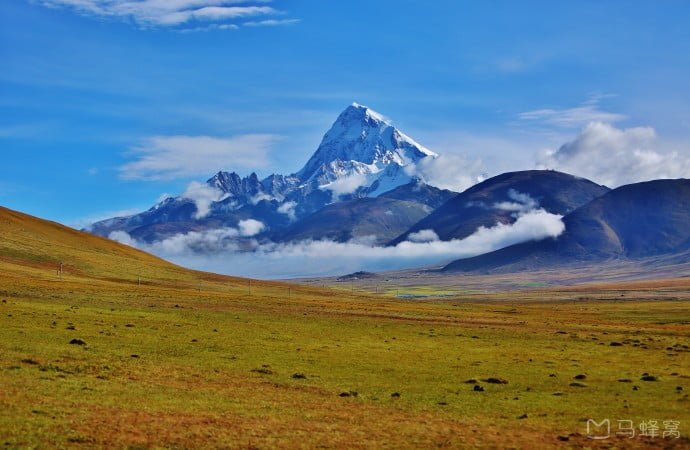Introduction to Jomo Lhari Peak
Jomo Lhari Peak, also referred to as “Chomu Lhari,”(ཇོ་མོ་ལྷ་རི་) meaning “Bride of Kangchenjunga,” is a revered sacred mountain in Tibetan culture. Located near Pari Town in Yadong County, Shigatse City, it stands proudly at 7,314 meters, making it the highest peak on the eastern ridge of Dorchen Tso. This majestic mountain is deeply ingrained in the hearts of the local community and is a significant landmark in the region.
Mythological Essence
Jomo Lhari Peak holds a rich mythological background. It was believed to be the bride of Kangchenjunga, a prince from Sikkim, and is one of the seven fairy sisters of the Himalayas. Their love story, marred by jealousy and divine intervention, led to their transformation into mountains, symbolizing eternal love and peace. Jomo Lhari, gazing forever towards her beloved prince, stands as a testament to their eternal love.

Geological Marvel
The landscape of Jomo Lhari is characterized by its steep and rugged terrain, often shrouded in clouds and mist, which adds to its mystical appeal. As part of an ancient Paleozoic stratum and the Himalayan granite block mountain system, it plays a crucial role in the region’s geography. The mountain is known for its challenging climbing routes along the north side glacier, attracting climbers since 1954, with notable successful ascents.
Jomo Lhari and Dorchen Tso
Jomo Lhari majestically overlooks Dorchen Tso, also known as the “Lake of Deep Love.” The relationship between the mountain and the lake is a significant part of local lore, with visitors often offering white Khada and barley wine at the base of Jomo Lhari as a gesture of respect and to seek blessings. The lake near Jomo Lhari showcases a mesmerizing array of colors, creating a spectacular view, particularly during sunrise and sunset.
Travel Essentials
Jomo Lhari is easily accessible from Shigatse to Yadong and can be reached by rental car or self-drive. The journey from Lhasa covers 386 kilometers along the China-Nepal Highway. The spiritual ambiance at the mountain’s base, lined with prayer flags and Mani stones, offers a unique cultural experience.
Best Time for Visits
The best time to visit Jomo Lhari is during the clearer weather from November to April, with the months of April, May, September, and October being particularly favorable for photography. The rainy season, lasting from July to September, often brings clouds around the peak, adding a different element to its beauty.
Embark on a journey to Jomo Lhari Peak, where myth and nature converge, offering a mesmerizing and spiritual experience in the heart of the Himalayas.
